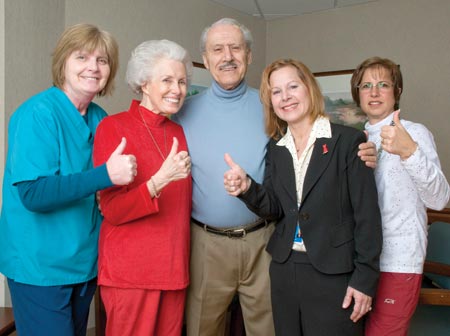Nurse-led vascular disease screening saves a man’s life
By Jennifer Walker

It was Richard David’s wife who suggested the two of them visit Bethesda’s Suburban Hospital, a member of Johns Hopkins Medicine, for a vascular disease screening. She had read about the event in the hospital’s community newsletter New Directions, and it was free, after all. They decided to go.
This was a decision that would land 83-year-old David in the hospital for the first time in his life, having surgery to save his life.
David’s screening in October showed that he had vascular disease in the form of a 6.0 centimeter abdominal aortic aneurysm (the typical aorta is 1.8 cm wide.) David recalls the doctor saying that one of the reasons vascular disease is called the silent killer is because people can be walking around “with a six-centimeter time bomb in them and not know it.”
David didn’t even have the disease’s main risk factors—he has never smoked, had diabetes, or hypertension. Even though his age puts him at greater risk, he would never have known to get tested.
The physician who performed David’s vascular screening immediately called his primary care doctor, followed up with a second call the next day, and faxed the results to the doctor’s office. David says he got “Prince Charles, tailor-made service” at Suburban Hospital, from beginning to end.
A few weeks after his surgery, David is feeling strong. “I want to remain active…I vacuumed the other day [for my wife]; I help her wash and fold the clothes,” he says.
“Finding Mr. David’s aneurysm is why we all do this work,” said Melody Knapp, RN, administrator, cardiovascular services at Suburban Hospital. “Thank goodness we saw him when we did.”
Vascular screening program is a hit
In her December interview, “How Safety Protocols Prevent Drug Mistakes,” Linda Costa, PhD, RN, explains how hospitals have gotten much better at protecting patients from medical mistakes. The dialogue was part of the Interdisciplinary Nursing Quality Research Initiative series commemorating the 10-year anniversary of the IOM report, To Err is Human, which highlights the chilling story of Ben Kolb, an 8-year-old Florida boy who died in 1995 after he was injected with the wrong drug during a routine surgical procedure. Listen to the interview online at http://inqri.blogspot.com.
